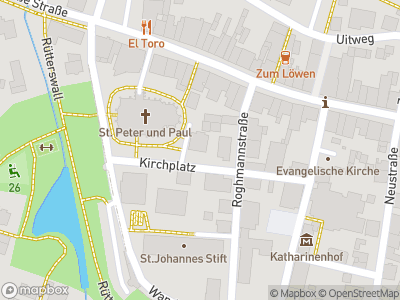Kranenburg arose in the 13th century around an old fortress. As a town on the border between the shires of Cleves and Gelre, it soon acquired a canal and city walls to defend it. In 1294 the town was even given a city charter. The castle of Kranenburg has long since disappeared.
City wall
The city wall can still be seen in the south of Kranenburg. The wall here forms part of the houses that were later built on top. The little gardens at the rear now lie in the old city canal. The most striking part of the wall is the mill tower. It is a former windmill that was built high on the wall in order to catch as much wind as possible. The mill now houses a museum.
Holy Cross
Despite its small size, Kranenburg has a substantial Gothic cathedral, with an important regional function. The Peter and Paul church has been a Roman Catholic place of pilgrimage for over 700 years, because of the legend of the Holy Cross.
Legend
In 1280, a shepherd boy received Holy Communion. However, he found the piece of bread hard to swallow and spat it out into a hollow tree at the edge of the Reichswald forest. He confessed his sin, and 28 years later a wooden crucifix was found in the same tree. Ever since, this crucifix has taken a prominent place in the richly decorated reliquary of the church. It is carried by the faithful in a procession through the town every year.
Holy water stoup
In order to obtain funds for the repair of the roof, in 1908 the parish priest sold a holy water stoup to an art dealer. The dealer immediately sold it for five times the sum he had paid. The buyer was banking billionaire, J.P. Morgan, who left it after his death to the Metropolitan Museum of Art in New York. It is there now, in the most visited museum of America. The ivory stoup appears to have come down from the 9th century and is priceless. The only consolation for Kranenburg is that many more people are now able to see the treasure than the little town could possibly accommodate.














